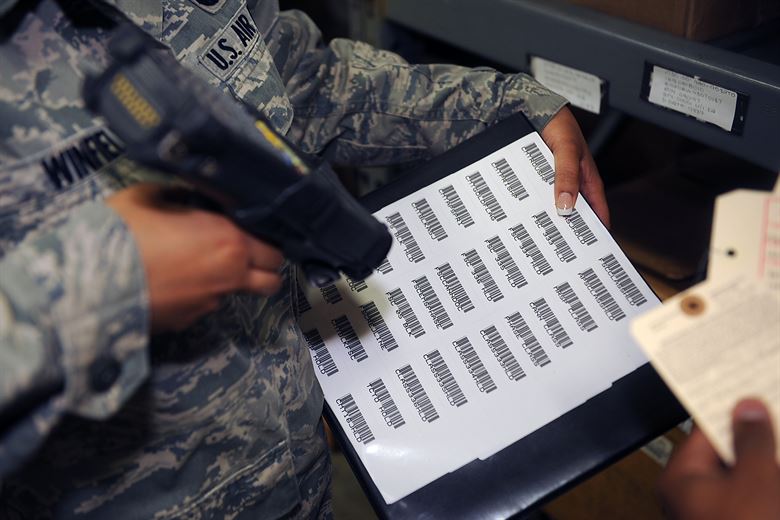How to Create & Manage SKU Numbers
Post on Wednesday, December 6th, 2017 in Accounting

A stock keeping unit (SKU) is a unique alphanumeric code that the supplier assigns to each product, thus making it easy to distinguish this product from others.
Unlike bar codes, SKUs are used internally, not externally. Besides, they are human-readable and do not have such strict standards as bar codes.
A SKU number may look like this: TS-Cot-Bk-36. At first, it may seem to be a random, meaningless array of letters and numbers, but if we decipher the SKU meaning, it will be possible to see “T-Shirt, Cotton, Black, Size 36.” This example gives a better understanding of what an SKU number is.
Creating SKU numbers is one of the most important prerequisites of your inventory management. Without SKU numbers, your system will not function properly, so it is crucial to know how to create SKU numbers and manage them.
Let’s see what you need to start off.
- Decide upon a naming system for your SKUs. What information should a SKU code include? The example above includes the material, color, and size, but you can extend the code with other information, depending on the products that you sell. For example, you can add the brand, model, year of manufacture, and so on.
- Create uniform abbreviations for elements of your SKU and always use these abbreviations to ensure the consistency of your SKU inventory. For example, you can use either “bk” or “B” for “Black” – it is up to you. All you need is to make sure that you always stick to the chosen abbreviation.
- Use an SKU generator. If you have too many SKUs but have no time or resources to name all of them manually, then you can use an automatic stock keeping unit generator. There are many apps that can generate SKUs, and some large e-commerce platforms also offer built-in SKU generators. You just enter the characteristics of your product, and the system generates a SKU number for you.
- It’s also common for SKUs to be provided by manufacturers to describe the style of their products. Often, you can just use the SKU provided by the manufacturer.
Some Useful Tips on SKU Numbers
- Keep it simple. Make your SKU code as informative as possible, but do not make it too long or too short. Include only the most important information so that it is easy for everyone to understand the SKU number.
- Start your SKU code with characteristics that are common for a group to which the product belongs, and then put unique characteristics. For example, “T-Shirt”, or “TS”, is a general characteristic, whereas its color, size, or model are unique characteristics.
- Separate the parts of a SKU number with dashes only. Never use spaces or other symbols, especially special characters, such as asterisks or ampersands, for example: “tshirt*cotton black 36.” This will render your SKU code useless for many systems, as they may not recognize the code.
- Do not use complete words in all parts of a SKU number, such as “tshirt-cotton-black-36”. You can spell out some short words such as “Black”, but it is better to stay concise.
- In your SKU code, avoid using letters that are similar to numbers, such as “O”.
- Keep a database of your SKU abbreviations.
Here are some real-life examples of how a product would convert to an SKU number, just to give you a better idea of what to look for.
- If a clothing company makes a black T-shirt for its 2017 collection, an SKU number that makes sense would be BLK2017TS123.
- If the same clothing company makes a white hat for its 2016 collection, an SKU number that makes sense would be WHT2016HT456.
Why Are SKUs So Important?
As an integral part of inventory management, SKUs are useful for a number of reasons:
Faster inventory management processes.
With a SKU code, it is way easier to search for inventory items and track their movements. You will see it yourself after you start using SKUs in your inventory management.
Increased accuracy.
SKU numbers can be contained in barcodes, and barcoding tools eliminate human errors that may occur when entering the data manually.
Faster and easier access to data.
With an SKU number, it is possible to get the needed information about a specific product within seconds.
Improved quality of service.
SKU inventory codes help you make sure that the warehouse employees do not pick or ship the wrong items.
Location-specific nature.
If you store the same products in different locations, you can assign different SKU inventory numbers to these items for more efficient inventory management. Some inventory management services also have the option to implement multiple-location management of the same SKU as a feature, if you’re looking for an alternative to assigning different SKU numbers.
Protection from theft.
It is much more difficult to steal an item with a unique number, even if it is a small item among lots of other items inside a big warehouse. SKUs allow you to track and organize your inventory so you know where everything is at all times. You can track movement and location, so if something is missing you will immediately know about it. You will also have a unique number that identifies exactly which product is missing. More oversight brings less theft.
Possibility to define low stock threshold.
For each SKU, you can specify the reorder point and safety stock value, with which you can control your inventory amounts and be aware of when you should replenish it.
Inventory Software Helps
Dynamic Inventory software is the best tool for SKU inventory management. Our system is easy to use and allows you to create and manage your SKUs quickly and painlessly. Contact us today to get more information or schedule a personal demo. We’d be happy to help you improve your inventory management procedures and make them as streamlined as possible.

Adam is the Assistant Director of Operations at Dynamic Inventory. He has experience working with retailers in various industries including sporting goods, automotive parts, outdoor equipment, and more. His background is in e-commerce internet marketing and he has helped design the requirements for many features in Dynamic Inventory based on his expertise managing and marketing products online.
Learn how Dynamic Inventory can streamline your business today!
Schedule a DemoRelated Articles
see all
An Overview of Dell’s Supply Chain Strategy
Dell entered the market in 1985, and evolved from a small, dorm-room based company in Texas to one of the …

How to Improve Your Warehouse Management System
A warehouse is not only a place to store your inventory. It also hosts all of the important logistics and …

How To Write Product Descriptions That Actually Convert To Sales
A product description should not just be a bland list of a product’s features. After the price of an item, a …

